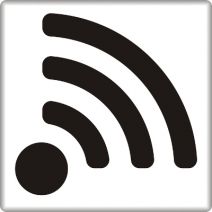 Wouldn’t it be nice to boost your WiFi signal and access it from anywhere in and around your office? Sometimes the solution is purchasing a new, more powerful router, but you might be able to get more out of your existing device by improving the placement of it.
Wouldn’t it be nice to boost your WiFi signal and access it from anywhere in and around your office? Sometimes the solution is purchasing a new, more powerful router, but you might be able to get more out of your existing device by improving the placement of it.
Avoid Walls By Using Your Line of Sight
Essentially, WiFi is comprised of electromagnetic waves, the same kind picked up by your radio. One thing about these waves is that they can be weakened when passing through physical objects, like the walls and floors of your building. Therefore, the best place to put your router is in an open room. To achieve a signal with minimum obstructions, try placing your router in a spot where you can see as far back into your home or office as possible. Additionally, avoid sticking it in a small, closed off room like a closet.
Avoid Placing it Near Other Electronics
While many users will place their router near their PC due to cord constraints, the best place for it is away from other electronic devices. Some devices put out signals that will ever-so-slightly interfere with your WiFi signal; even the motion of computer fans can weaken a WiFi signal.
Place Your Router in the Middle of Your Building
A WiFi router will broadcast its signal in all directions, meaning that you’ll get better coverage by placing it in the center of your building. For example, placing your router in the corner of your home or office will cause a weak signal at the opposite corner of the building. Instead, try placing the wireless router in the center of your building so that all four corners will receive equal signal strength.
Keep Your Router Off the Floor
It’s the nature of WiFi to broadcast in every direction; not a direct line from the router to your device. Therefore, if you place your router directly on the floor, a large portion of your signal will be sent to your basement, which you may not want. Additionally, if your floor is made of concrete or has metal beams, it will greatly hamper your signal as well. At the very least, we recommend that you place your router a few feet off the ground.
Point Your Two Antennas In Opposite Directions
Most WiFi routers have two antennas. It’s also the case that different devices have their receiver antennas pointed in different directions, either vertically or horizontally. Therefore, you’ll provide your different devices with the best coverage if you point one of your router’s antennas horizontal, and the other vertical.
If you cycle through these five different tips and your WiFi signal is still crummy, then it’s time to either upgrade your hardware, or contact your ISP to sign up for more bandwidth. For professional assistance with your company’s networking needs, call Evolve IT at (518) 203-2110.

